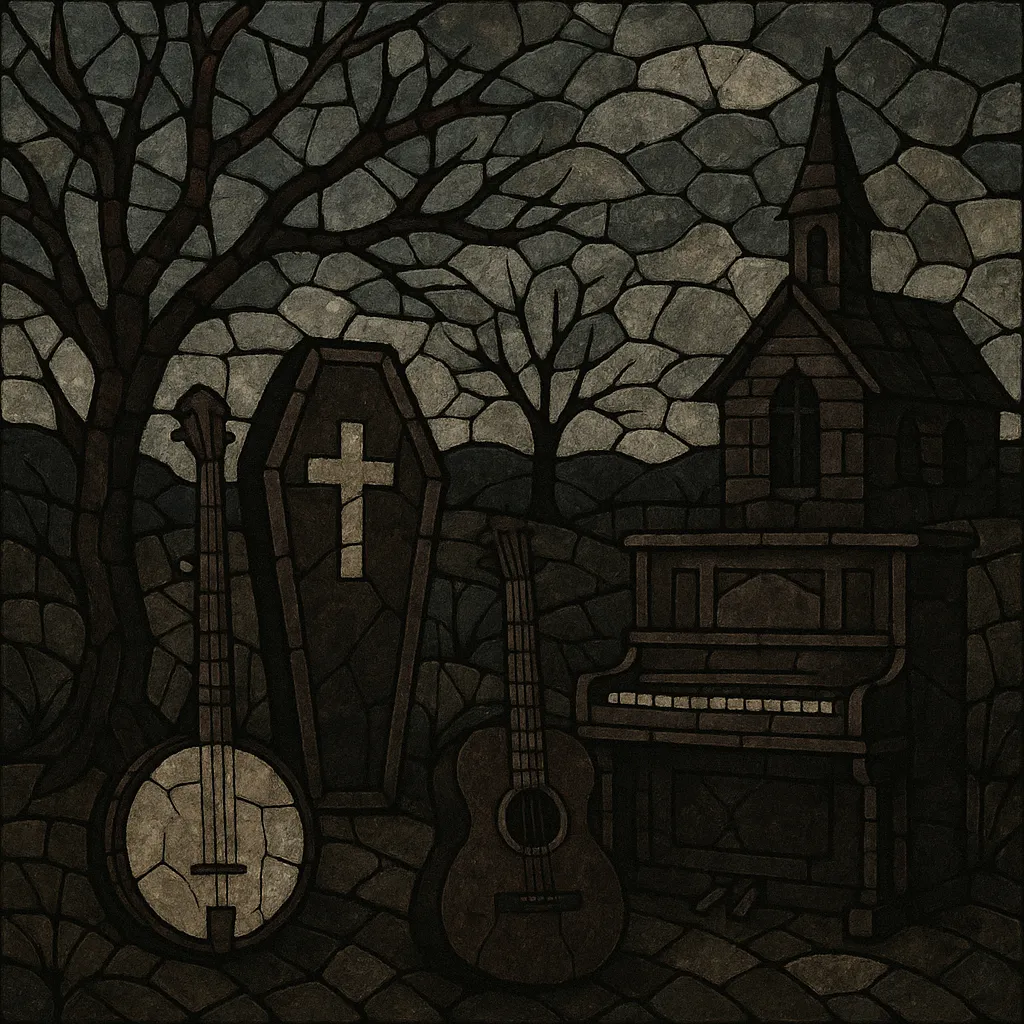
Gothic country (often called country noir or gothic Americana) blends traditional country and folk instrumentation with the brooding atmospheres, moral ambiguity, and literary imagery of Southern Gothic. It favors minor keys, slow to mid-tempos, and vivid storytelling about sin, redemption, murder, faith, and decay.
Sonically, it sets banjo, fiddle, acoustic and tremolo-laden electric guitar, upright bass, pump organ/harmonium, and sparse percussion against dusky reverbs and droning pedals. Vocals tend to be intimate or preacherly, carrying ballad traditions into darker, hymn-like territories. The result is an eerie, pastoral sound that feels simultaneously old and haunted, rustic and cinematic.
Gothic country’s DNA lies in the American murder ballad tradition, Appalachian folk, and classic country storytelling, where tales of crime, sin, and fate have long coexisted with hymns and spirituals. Thematically, Southern Gothic literature (Flannery O’Connor, William Faulkner) and the spiritual severity of rural hymnody provide narrative and tonal cues, while post-punk and gothic rock suggested a darker, more cinematic ambience.
In the 1990s, artists began fusing alt-country’s DIY ethos with somber, Biblical and folkloric narratives. The Denver scene—often called the “Denver Sound”—was crucial: 16 Horsepower (debuting mid-1990s) brought fire-and-brimstone intensity, clawhammer banjo, and tremolo guitars to country forms. In Chicago, The Handsome Family crafted laconic, sepia-toned ballads steeped in uncanny Americana, further defining the genre’s literary core.
The 2000s saw key records and projects that codified the style. David Eugene Edwards formed Wovenhand (2002), intensifying the devotional, apocalyptic edge. Slim Cessna’s Auto Club and Munly (including Munly & the Lee Lewis Harlots) expanded the Denver Sound’s preacherly drama. Elsewhere, Those Poor Bastards, Murder by Death, and O’Death layered folk, country, and rock timbres with noir storytelling. The Builders and the Butchers brought a raw, percussive, street-parade feel to the idiom. Independent labels, touring circuits, and early social platforms helped knit a loose international audience.
In the 2010s, interest surged as “gothic Americana” aesthetics touched film/TV and streaming playlists (e.g., The Handsome Family’s “Far From Any Road” gaining new visibility). Acts like Heathen Apostles connected Western motifs, outlaw ballads, and dark cabaret tones; Amigo the Devil popularized an intimate “murderfolk” strain. Today the genre remains niche but steady, intersecting with neofolk, dark folk, and alt-country while retaining its distinct mix of rustic instrumentation, moral gravity, and spectral atmosphere.

